Abstract
Experiments were carried out to determine if diphenylmethane is utilized by a species of Pseudomonas (Hydrogenomonas) in the dissolved state regardless of the physical state (liquid or solid) of the undissolved diphenylmethane suspended in the medium. Bacterial growth rates in the presence of various amounts of solid or liquid diphenylmethane indicate that liquid diphenylmethane is utilized at the aqueous-diphenylmethane interface but that solid diphenylmethane is not. A Pseudomonas sp. that was isolated on naphthalene (solid), but could not utilize heptamethylnonane, was grown in the presence of various amounts of a naphthalene-heptamethylnonane mixture (liquid). The growth rates indicate that the bacterium could utilize naphthalene at the aqueous-hydrocarbon interface, which is not the case in the absence of the heptamethylnonane.
Full text
PDF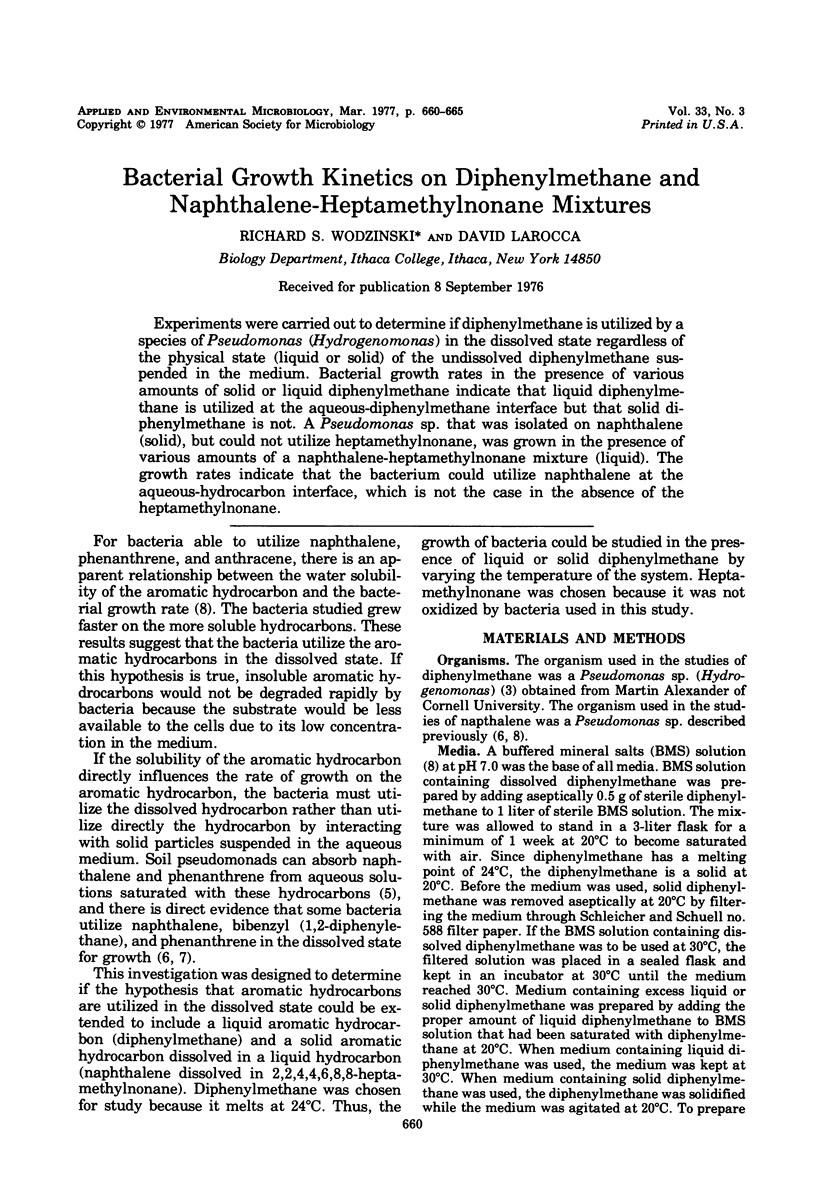
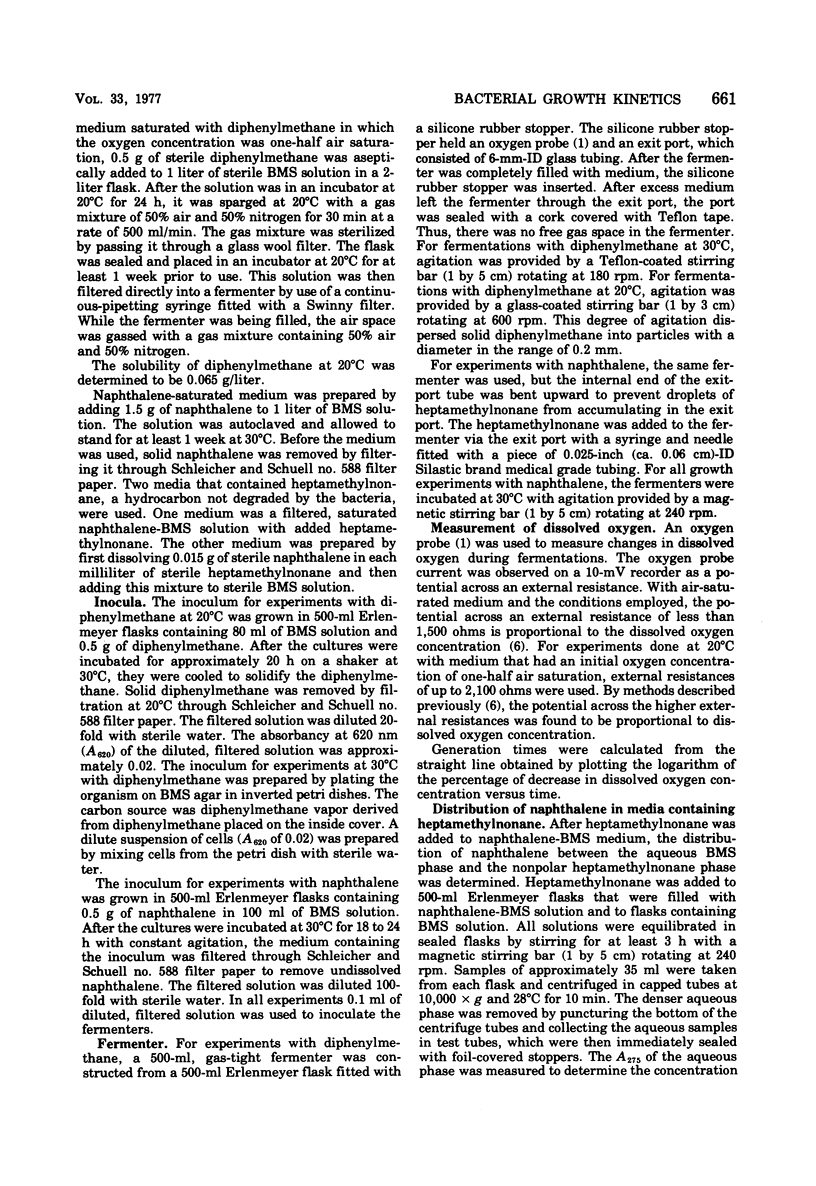
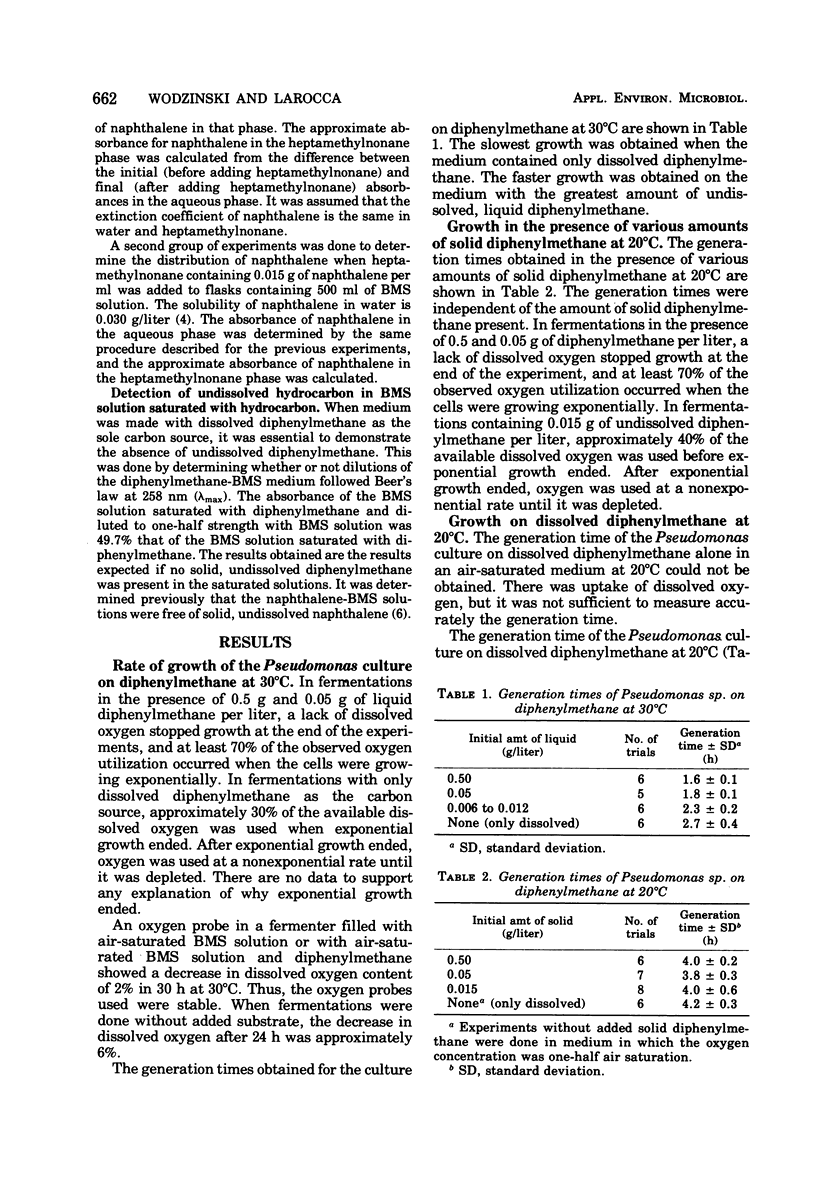

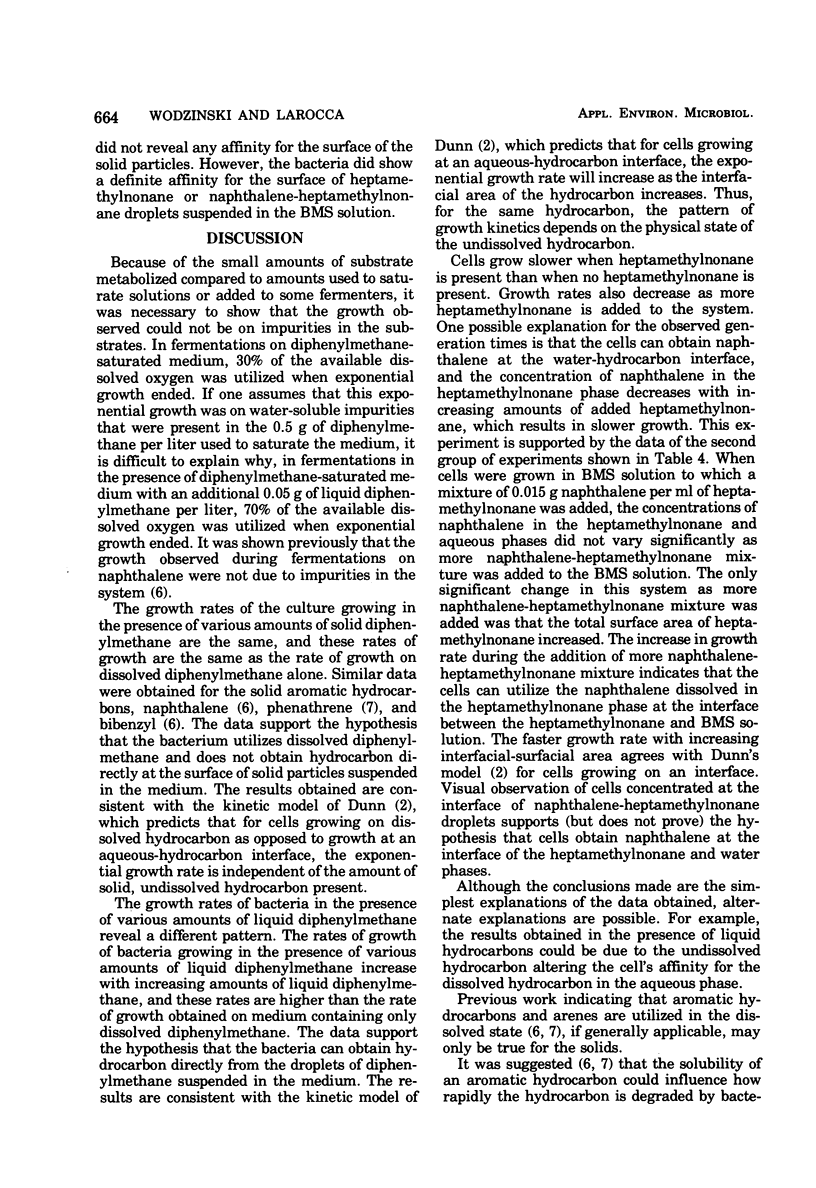
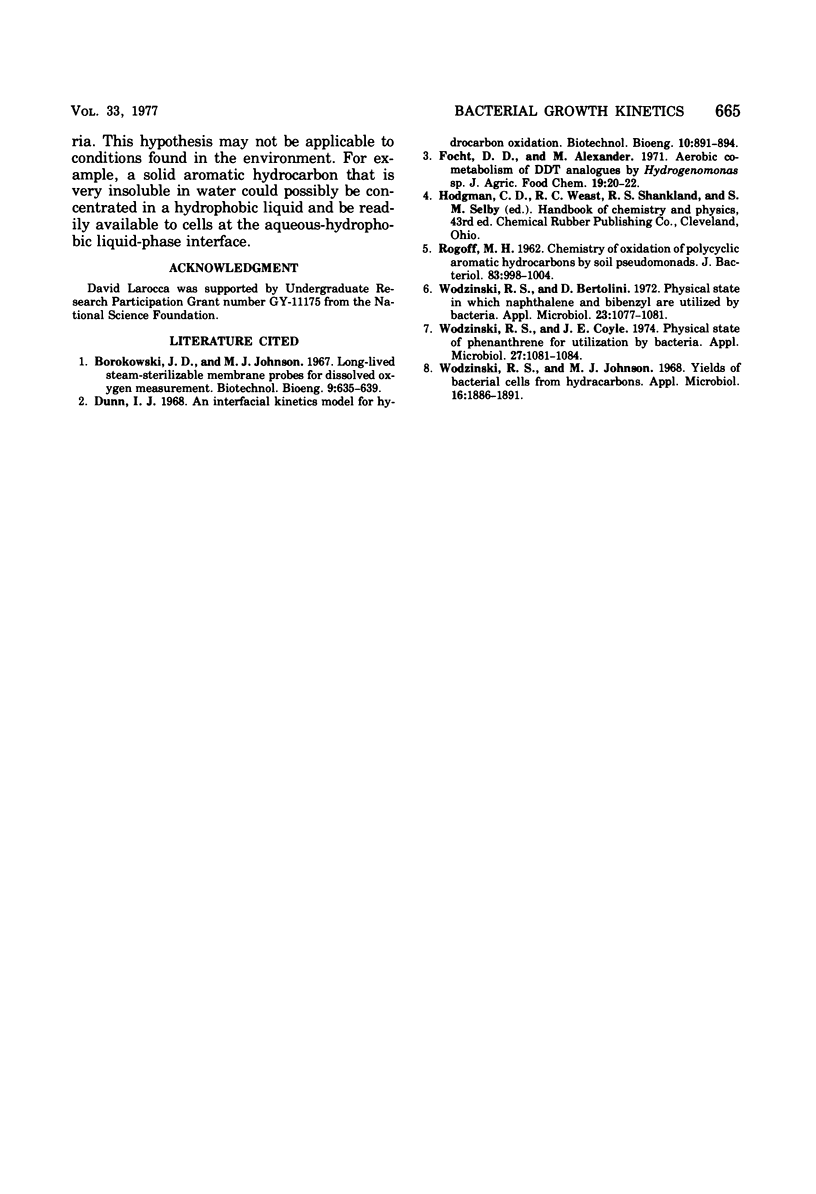
Selected References
These references are in PubMed. This may not be the complete list of references from this article.
- Focht D. D., Alexander M. Aerobic cometabolism of DDT analogues by Hydrogenomonas sp. J Agric Food Chem. 1971 Jan-Feb;19(1):20–22. doi: 10.1021/jf60173a042. [DOI] [PubMed] [Google Scholar]
- ROGOFF M. H. Chemistry of oxidation of polycyclic aromatic hydrocarbons by soil pseudomonads. J Bacteriol. 1962 May;83:998–1004. doi: 10.1128/jb.83.5.998-1004.1962. [DOI] [PMC free article] [PubMed] [Google Scholar]
- Wodzinski R. S., Bertolini D. Physical state in which naphthalene and bibenzyl are utilized by bacteria. Appl Microbiol. 1972 Jun;23(6):1077–1081. doi: 10.1128/am.23.6.1077-1081.1972. [DOI] [PMC free article] [PubMed] [Google Scholar]
- Wodzinski R. S., Coyle J. E. Physical state of phenanthrene for utilization by bacteria. Appl Microbiol. 1974 Jun;27(6):1081–1084. doi: 10.1128/am.27.6.1081-1084.1974. [DOI] [PMC free article] [PubMed] [Google Scholar]
- Wodzinski R. S., Johnson M. J. Yields of bacterial cells from hydrocarbons. Appl Microbiol. 1968 Dec;16(12):1886–1891. doi: 10.1128/am.16.12.1886-1891.1968. [DOI] [PMC free article] [PubMed] [Google Scholar]


